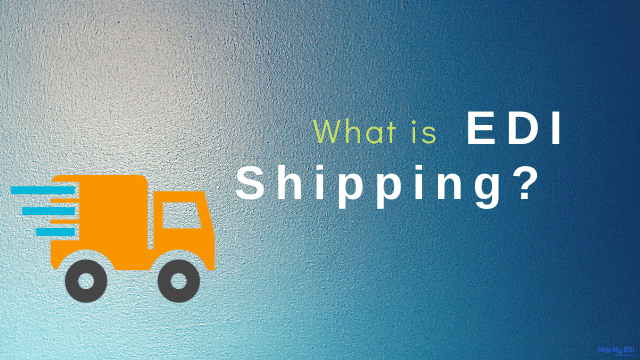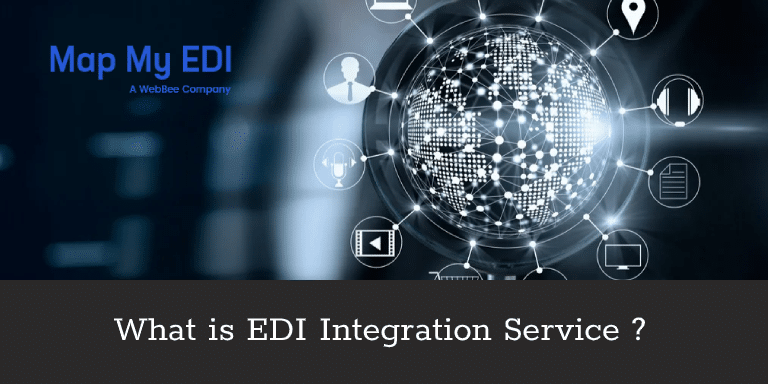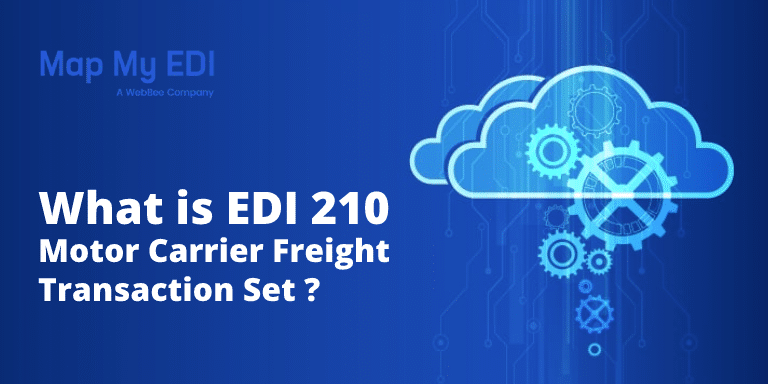What is the EDI Shipping and How it Works?
The shipping industry is getting boosted in terms of their work recently, post COVID-19, every country is dependent on shipping for inland transportation, import, export, etc. and in this, the most difficult task is to maintain the data or the details of the transaction. With an increase in demands by the customer the hard copy documentation is also an aspect that companies are fed up with. What if all these data transactions can be done online without paper, this is when we can use the EDI shipping system. It Helps B2B EDI transactions to happen seamlessly with very fewer errors
What is EDI in Shipping Industries
The world of shipping is changing in all aspects no matter airways, waterways, groundways, or railways. As the whole process of the chain is interdependent on each other, the import and export activities are taking place vigorously. So, to survive in the business environment, a business must improve performance including its shipping process.
Normally, The shipping business has to manage the documentation details of the
- Warehouse
- Distribution details
- Shipping details
- Financial matters
To avoid any kind of disorganized details and to get more efficient outputs companies are shifting towards EDI Integration Software.
The EDI in shipping industries generates the documents required and arranges it in an organized manner. EDI shipping has proved that it is more efficient in its work and has benefited the shipping industry greatly.
How does EDI work in shipping industries?
There has to be data maintained about the purpose of processing goods, shipments, or any kind of financial activity for EDI logistics. Instead of entering each data, the electronic data interchange system (EDI) automates the entire procedure by collecting all the data available in the system.
For e.g.
Suppose there is a shipment of 10,000 mobiles from the warehouse to the showroom. By scanning a single QR code available on the box, the EDI shipping system will access the data of shipping, address of the showroom, pending finances, invoices and billings by one go. It sends this report to the concerned persons, departments, or systems. All these activities will be carried out via complete automation and there is no requirement for human involvement. With this example, we clearly understand how EDI works in logistics.
What is EDI in the transport industry?
One more aspect is EDI transport is getting popular in the transportation industry. The seamless data interchange between two companies in the transport world can be automated with the help of EDI transport. It results in saving money and time to a large extent with zero typo errors. Another key benefit of EDI in the transportation industry is that it offers seamless communication across the supply chain system.
Common transaction Codes for EDI in Transportation
- 204 – Motor Carrier Load Tender: The transporter sends it to the carrier to get a detailed bill of landing info of a shipment
- 990 – Response to the Load Tender: It is used by the motor carriers. This is to state whether they will pick up a particular shipment that was before offered by a shipper. This code is the response for the 204 transaction
- 211 – Bill of Lading: The transporter sends this set of transactions to the carrier to provide a detailed Bill of Lading information pertinent to a shipment.
- 212 – Delivery Trailer Manifest: The carrier can send a set of transactions to interested parties which contains the list of trailers having many shipments that have the tenders for the delivery
- 214 – Shipment Status Message: This code is sent by the carrier to the shipper or consignee to provide an update for your shipments with date, time, location, contact numbers, and route
- 210 – Freight Details and Invoice: This code is used by the carrier for the requisition of the payment for the services taken or services ordered
- 820 – Payment Order/Remittance Advice: This set of codes is used by the payer to send the information about the payments
- 997 – Functional Acknowledgement: This is used in response for each transaction to state the approval by the payee, shipper.
History of EDI in Shipping and Logistics
It was 1965 when a steamship line between America and the Netherlands started the usage of EDI by sending a message. Although it wasn’t the actual EDI yet the aspects and protocols were the same. Within 3 years i.e. 1968, many companies started using the system called electronic messaging. But there was confusion for formats and different standards between 2 companies. Thus, a committee was formed with the name Transportation Data Coordinating Committee (TDCC). Gilbert presided over it and worked alongside Joseph Carley, Earl Bass, and Ralph Notto.
They developed the standards for clarification between two partners which gave the way for ANSI X12 and modern EDI tracking.
Advantages of EDI in transportation
- As there is no human interference, the generation, sending, or recording of any transactions takes place much faster.
- The information is provided in real-time so that the possibility of delays can be avoided in the process of sending or receiving.
- The integration of all the operations no matter sea, land, the air is done in one communication flow by the system for the logistics operator.
- It provides secure administration procedures in the case of customs or PIF etc.
- It helps in the plan of the supply chain for the intermediates like distributors, retailers so that there is no supply of faulty or expired logistics.
EDI Shipping Codes
A list of elements that are mentioned in an EDI document and what the means for both the sender and the receiver is known as a code list. And in this list, each EDI shipping code’s names have a meaning and deliver the right kind of information/message.
Below listed are some kinds of EDI codes:-
– 01 Basic
– 02 End of Month
– 03 Fixed Date
– 05 Discount not applicable
A code list for each element mentioned in the document is offered by every EDI standard through which the following features are applied such as:-
– Making use of any number of codes as per our requirements
– Create unique code tables that store code information in any field and state a specific thing.
– Importing and exporting code lists between forms and copy-pasting them.
Translating an EDI code to a layman’s language is done by an EDI translator which can help in decoding the message.
The more knowledge we have on each code’s meaning and purpose, the better understanding we have of the EDI Shipping codes.
EDI Shipping documents
An EDI document is referred to by the number of the EDI document and its name.
An EDI Shipping Document is functioned to exchange information between trading partners and contains the same amount of information in its paper equal.
An EDI document consists of three core pieces: envelopes, segments and data elements, formatted to follow a specific EDI standard.
For example, the order X12 940- Ship from the warehouse is an EDI document used to instruct the warehouse when shipping goods to a trading partner.
Making sense of an EDI Shipping Document can be complex and time-consuming. Some companies have found a way to manage by understanding the standards on which the document is based on the implementation of guidelines and managing the information.
EDI charges in shipping
When a forwarder organizes the exchange of electronic data to ports/customs and other government entities that need the information is how EDI charges in shipping are applied. Sometimes the fee is applied at the request of the customer or a vendor who may charge a fee for a particular service and may even bundle fees into a total package price.
EDI 940 Warehouse Shipping Order
This shipping order is sent by the supplier when they want to involve a third party warehouse or a third party logistic firm (3PL) to make a shipment to a retailer, grocer, distributor, or to a secondary location of the supplier.
The EDI 940 Warehouse Shipping Order can convey the instructions to ship the same product to many locations or specific cartons to a specific location.
The EDI 940 Warehouse Shipping Order includes benefits for both the sender and receiver. Some of them are:-
- Reduces time wherein the supplier has to submit shipping orders.
- Eliminates the use of email, fax, or CSV for sending or receiving warehouse orders.
- Increases operating efficiency by reducing time and cutting out the use of paper
- It provides more accurate data and gets rid of errors.
Key data elements in EDI 940 Warehouse Shipping Order
- Buying party sale order number.
- Suppliers order number
- Buyer’s ship to location
- Requested ship date
- Item identifiers
- Quantities.
EDI Shipping Transaction
When one company wants to send a sale order to another company is when an EDI transaction takes place. An EDI shipping transaction is a standardized business document. Companies and trading partners exchange these documents using EDI standards. This way you can automate and streamline sale orders, invoices, acknowledgment, payments, tracking, and other reports.
An EDI shipping transaction comes to no use if it doesn’t contain a certain smallest amount of vital data. EDI transaction codes were designed to be independent of the communication used by companies or the software technology that generates EDI data.
EDI 945 Warehouse Shipping Advice
An EDI 945 Warehouse Shipping Advice is made when a third-party logistic (3PL) or warehouse wants to notify the supplier that the shipment has been made. It provides the information needed for the supplier to check the quality shipped against the quantity ordered, create an invoice, and generate an 856 Advance Ship Notice (ASN) transaction.
Benefits
Benefits for both the sender and receive depends on how automated and integrated the transaction is for both parties. Benefits of EDI 945 Warehouse Shipping include:
– Reduces time spent by a warehouse to manually send shipping advice and paper-based shipping documents.
– Increases operating efficiencies by reducing the volume of paperwork.
– Gets rid of using email, fax, or CSV to send or receive warehouse shipment notices.
– Two prime reasons why EDI 945 are being used
– To report a reason for a change in shipping date, why products were cut from a shipment and product substitution information.
– To communicate the shipment detail to the retail customer in the EDI Ship Notice.
Advance Ship Notice EDI 856
EDI ASN or Advance Ship Notice, also called EDI 856 code is used to establish electronic communication of the contents of shipping to another partner. Basically, it is an advance notice for the partner about the arrival of the shipment. It is commonly used by manufacturing industries, automotive industries, retailers either to inform or to respond to EDI 850, EDI 830, EDI 862 codes. It includes descriptions, information, and types of products. So it consists of
- Shipment information and tracking numbers
- Purchase order numbers and information
- Items and quantity information
- Packaging information
EDI 862 Shipping Schedule
In the shipping business, instructions change very frequently and it depends on many factors. EDI 862 code is used to describe if,
- The order Quantity is decreased
- The order Quantity is increased
- There is no change in the shipping date.
With this, it also ensures that whether the supplier has enough inventory or not, various instructions about shipments and most of the aspects of EDI 862 codes match with EDI 830 planning codes. So EDI 862 basically deals with schedules, orders, timely updates of shipping.
Wrapping
Likewise, with other industries, EDI offers many benefits for the shipping industry as well. Many EDI service providers offer robust and powerful EDI solutions for your assistance. Among them, WebBee Global’s ‘Map My EDI’ solution is the best.
This ‘MapMyEDI’ offers several advantages such as EDI Tracking & Search, B2B EDI, EDI Agreements, EDI Mapping, EDI Error Handling, and EDI Transaction Codes.
Therefore, make use of this EDI solution for your business data exchanging and enhance overall performance at the earliest.





